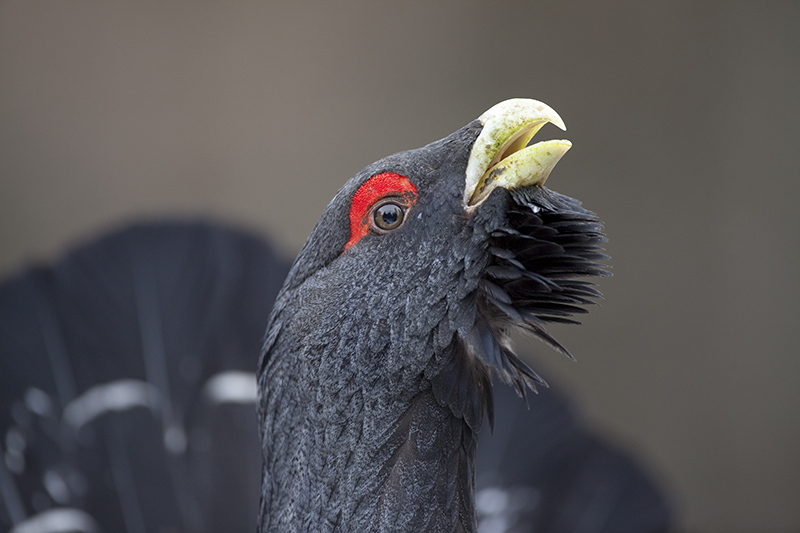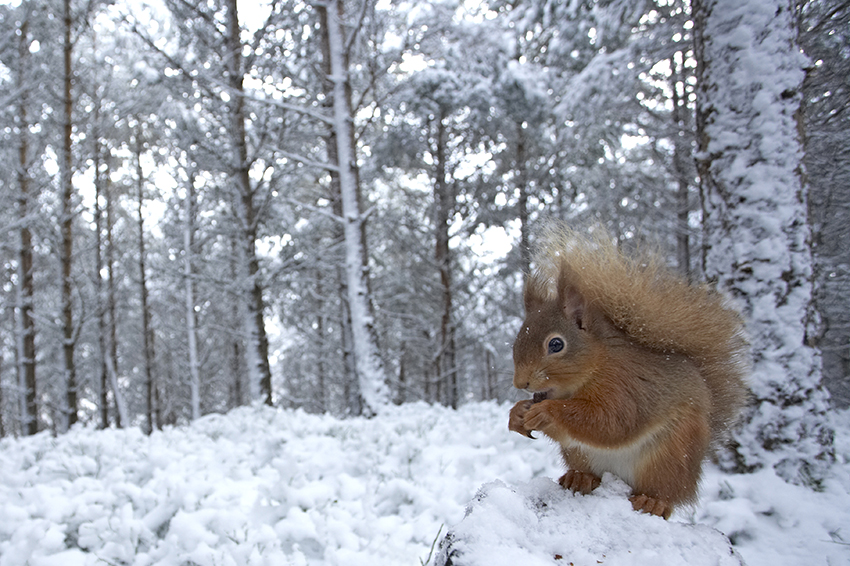August 1998. It was a nervous morning as my old mate Mark Hamblin and I sat in my kitchen drinking coffee, awaiting the arrival of our very first guests on our very first photo tour in our very first year of collaboration. We had no track record, no model on which to base the tour content and no idea how we would be received. It was all very wing-and-a-prayer. By late afternoon the guests had arrived and we nervously struck up conversations about anything that came into our heads. Seven days later with a sigh of relief, it seemed like we’d got away with it.
Tag: wildlife
I’m a Beaver Believer!
Rare. Elusive. Nocturnal. Aquatic. None of these words caused me to brim with confidence as I drove west recently in search of Scotland’s newest wildlife resident. Knapdale Forest in Argyll was chosen as the site for the Scottish Beaver Trial, a 5-year investigation into the impact of beavers on their habitat and their potential as a boost to rural tourism. Back in 2009, 16 beavers were brought from Norway and via a 6-month quarantine and various medical checks, were released into a number of freshwater lochs surrounded by willow, hazel, alder and oak.
To share or not to share?
I read with great interest Laurie Campbell’s recent piece in Outdoor Photography magazine. In it Laurie describes the familiar dilemma of revealing to other photographers often hard-won sites of what can be, sensitive subjects. And Laurie is right, to share or not to share, is a dilemma.
On the road again.
I rarely seem to have time these days to read all the magazines that drop through my door; I’m sure it never used to be the case. One headline however, recently caught my eye: “Make the weather in Photoshop”. Apparently, for those who know what’s what, ice, sun, mist and rain can all be plucked from the digital heavens and inserted into an image with no one being any the wiser. Is that what it’s come to? Is that what nature photography is now about?
Puffin Bootcamp
There can be few wildlife photographers in the northern hemisphere without at least one decent puffin picture. The bar is probably higher with puffins than with any other bird. It is then even more important to find just the right place – lighting, background and viewpoint all play a part in just the right place – and our recent Puffin Bootcamp took us to the far north to just the right place: Fair Isle. Continue reading “Puffin Bootcamp”
Fresh or fodder?
On a recent photo tour I overheard my co-guide Mark Hamblin being asked about his favourite image. Mark replied that he tended towards images he’d recently taken, implying that ‘freshness’ equated to enduring ‘quality’. It’s inevitable that when photographers, even established pros like Mark, acquire new images, especially from a place that they’ve never before photographed, there is an emotional attachment to those images: Continue reading “Fresh or fodder?”
Svalbard ’13
The Arctic can be a cruel mistress. Fog, wind, rain, snow, rough seas and rough stomachs can all conspire against you and bring into question the wisdom of spending time (and money) in this hostile wilderness. Of course it can also deliver great rewards and that’s the deal – sit out the bad stuff and the good stuff will happen. And so it was with our recent photo tour to Svalbard. Lots of waiting around in the frontier town of Longyearbyen was followed by lots of waiting around on our way to the pack ice and our primary prey, the polar bear. Whether its climate change or just seasonal fluctuations, year on year that journey to the ice gets longer as it drifts ever further north. Fortunately for our patient and good-humoured group, the ice quickly delivered some good stuff and within an hour we had our first shots of the world’s largest land predator. We stayed up all night and before breakfast enjoyed a second bear encounter – this time from the low level perspective of a zodiac. But as I say, the Arctic is fickle and following a euphoric if not weary breakfast, our luck changed and bad weather forced us back south.
A wonderfully peaceful overnight amongst the sanctuary of the Seven Islands and a couple of walrus shoots later, we were on our way back north for a second bite at the polar bear cherry. With an even longer trek thanks to the southerly winds, I must admit I was desperate to pick up a bear on the desert of ice, which stretched, to the horizon. After a few hours we spotted a distant bear and were delighted to see it heading straight for us. 20 minutes later we had the boat wedged into the ice and a healthy female polar bear heading our way. She eventually baulked at coming onto the boat but was close enough to stare into her deep black eyes and allow the use of a wide-angle lens. We stayed with her for over 12 hours allowing her to sleep in a nearby snowdrift, before moving on.
A dawn shoot and zodiac cruise at one of the most spectacular seabird cliffs in the world was followed by a hearty breakfast and we moved on towards Liefdefjorden via an obliging pod of humpback whales. Entering the fjord the sea was settled and the sun caressed our trusty vessel, M/S Origo. Our zodiac cruise after dinner was pleasant but uneventful and on our return, the skipper advised us of an advancing front and the need to up anchor and head for calmer seas. Dawn brought frustration and an abortive landing on Fuglesongen, home of the little auk. Heading south was a laborious and bumpy ride with most of our guests catching up on sleep and avoiding the first real bad weather of the trip. Evening brought relief in the spectacular St Jonsfjorden and a polar bear sleeping on a distant glacier sadly beyond the reach of our lenses.
Dodging the rough seas we found ourselves at a well-visited (for Svalbard) site for arctic fox and eventually found a pair sleeping amongst the rocks. Foxes being foxes they soon perked up and treated us to a short show of hide and seek amongst the glacial boulders in which they make their home.
Sun-kissed blue and fin whales in great light, along with Svalbard reindeer and diving arctic skuas, all found their way onto our trip list. For me though, this tour was all about light and I found myself photographing it…a lot! No subject, just drama. I love drama.
This was our last Svalbard cruise for the foreseeable future and so it was a reflective farewell to this part of the planet, a place that has delivered high adventure over the years, a place that stays with you. Anyone who has ever visited the arctic will know what I mean.
Thanks to the tightly knit band of photographers who made the tour such a pleasure, thanks to our excellent bear guide Katja Riedel and thanks too to the crew of Origo – you’re the best guys!
And yes, yes…thanks to Amanda (my wife) for accompanying me (read blagging a place) and helping out with chocolate and bear spotting.
Donating the shirt off your back!
I read with considerable interest, if not bewilderment, a letter in the latest edition of Scottish Wildlife, the magazine of the Scottish Wildlife Trust. A well-established photographer had written to all 47 Wildlife Trusts offering them free and unlimited use of his entire British wildlife archive – hundreds, if not thousands, of free images. The premise was that he couldn’t afford a financial contribution so this was his way of supporting the Trusts.
Let me first of all say that it’s a free country and individual photographers are at liberty to do as they wish with their own images. Let me also say that I’m not criticising the photographer personally, simply exploring the motivations for giving away such a valuable resource. To be fair, the conservationist in me applauds his gesture but I can’t help thinking this sets a very dangerous precedent, apart from undermining the livelihood of both hard-working freelancers and profit-stricken picture libraries.
I would like to think I do as much as most to support the conservation community and as a business, we donate significant sums to a variety of initiatives. Giving our hard-earned product away however, invalidates not only my own imagery but that of the community as a whole. Payment for imagery might not be necessary or even desirable for some, but gifting it for free devalues the product and debilitates the hard work of many professionals over the years to convince the conservation community that compelling imagery is something worth paying for.
I don’t know the photographer in question very well and there may be mitigating circumstances that I’m not aware of but in my view, giving away a whole library of images is not just another nail in the coffin, it’s the coffin being lowered into the ground. And just for the record, this isn’t about the money for me, it’s about dismantling the value of imagery, something that this community has fought hard to preserve.
We are undoubtedly at a crossroads in this industry and as much as anyone, I’m groping in the dark a wee bit. We live in tough times when tough decisions are necessary and everyone has different coping mechanisms. I’m not sure however, this is a step in the right direction but I’m happy to be proved wrong.
Scottish Nature Photography Festival
When I first started taking pictures I drew inspiration from lots of other photographers. In fact, I still do and there’s nothing like seeing the images of those you admire and aspire to emulate, projected large on a screen. Especially when the photographer is there to tell you how, and more importantly, why, he/she took the image. What better way then to spend an early autumnal day than at the Scottish Nature Photography Festival?
This event, initiated by Niall Benvie over 20 years ago, is held at Battleby, just north of Perth in a purpose-built, state-of-the-art auditorium. It’s a one-day event and features some of the most active and inspiring photographers at work today. They will show their fantastic images and tell the stories behind them. Marcus McAdam and Mark Hamblin from Scotland; Nick Cobbing from England; Edwin Kats from The Netherlands and Sven Zacek from Estonia – a wealth of talent and experience all under one roof. And this year, we’re featuring a brilliant young photographer – Bertie Gregory, who at 19, has a bright future in front of him.
Alongside the speakers there will be book signings, trade and conservation stands and the chance to network with like-minded enthusiasts – always a great way to pick up on the latest gossip in the nature photography world.
Image: Mark Hamblin.
All in all then, it’s a great day out and I’d go as far to say that if you don’t enjoy it…well, you will, so no need for rash promises that I’ll later regret!
Make a date in your diary – September 14th & 15th (programme repeated on both days). Tickets are £49-50 including lunch and refreshments. Book your tickets here.
Image: Edwin Kats.































